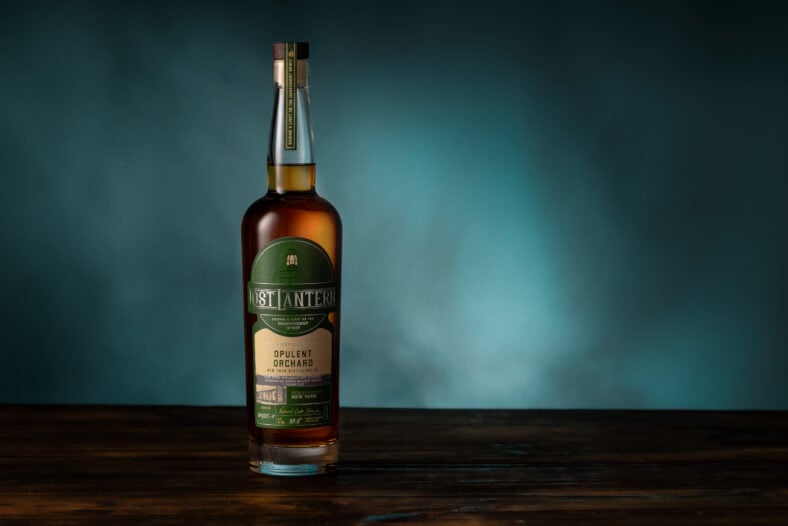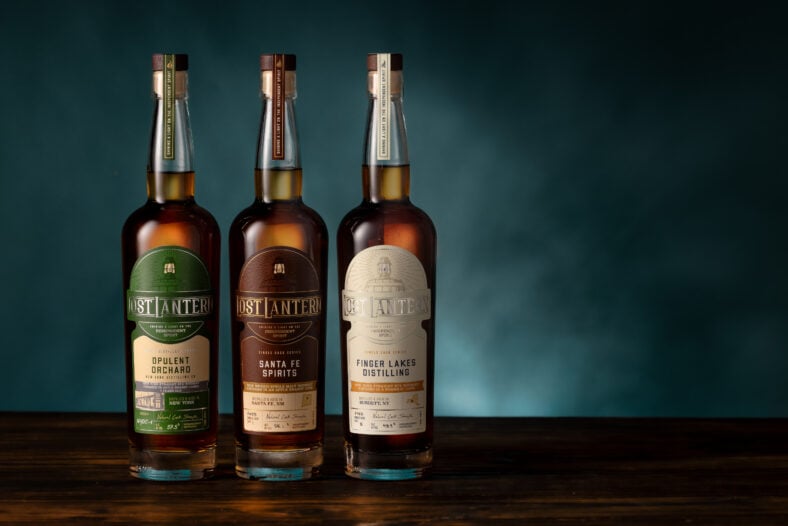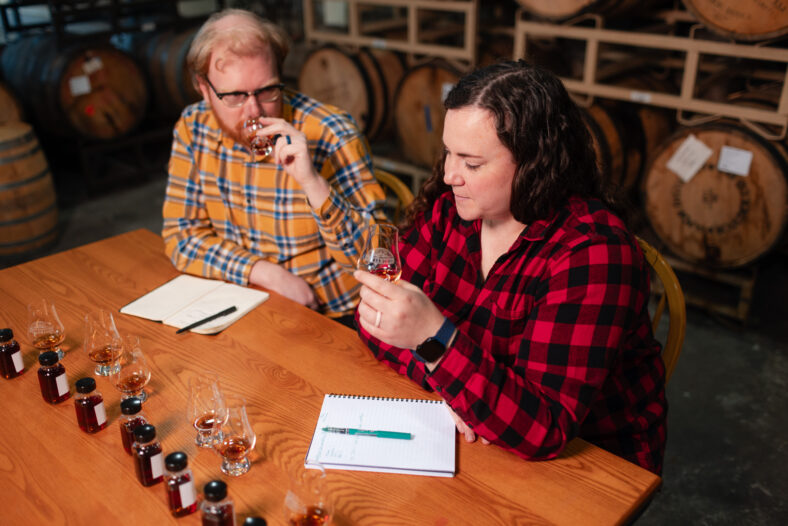Spirit Of The Week: Lost Lantern Opulent Orchard 7-Year-Old Apple Brandy-Finished Rye Whiskey
Vermont whiskey blenders partner with New York Distilling Co. for the flagship release in their Spring 2025 Collection.

“In this case, the whole focus of our Spring 2025 Collection is on how American distilleries are pushing finishing into a new era,” Nora Ganley-Roper explains to Maxim. “We’re showcasing something that is happening in real time.” The concept of ‘finishing’ being, after a whiskey has matured in its initial barrel (usually American oak, always virgin wood for bourbon), using second and sometimes third barrels to tweak flavors and dial in certain notes without using any artificial processes or ingredients. “It’s an area where we’re seeing constant innovation as producers continue to explore new flavors and new types of casks that are rooted in their local area,” she adds. “All of that means that this collection has the widest range of flavors we’ve ever done.”
The co-founder of the always curious and inspiring Lost Lantern whiskey label is sharing the creative vision behind their latest collection of whiskeys. The Vermont-based duo of Ganley-Roper and Adam Polonski are known for their artistry in blending and highlighting the best of American whiskey from across the country—taking the idea of ‘craft whiskey’ to the next level by sourcing casks from lesser-known distilleries and small, family-run operations, and elevating them into one-of-a-kind releases. Consider last year’s Spring 2024 Collection which focused on ryes sourced from across the Midwest, the highlight being the Spirit of the Week Far Flung Rye.
“All of our collections have a unifying theme — so far we’ve done collections that focus on regions, styles, or ages. When we decide to do a collection, our goal is to showcase a trend that we’re seeing in our work sourcing whiskey for Lost Lantern,” the former sales director of New York’s landmark Astor Wines reveals. “There’s honestly so much more that we could have included in this collection, like local wine and beer finishes, but we had to stop somewhere.“This is just the tip of the iceberg when it comes to the new tradition of finishing in the US. We hope that people will use this as a jumping off point to explore the full landscape.”

Initially unplanned, the Spring 2025 Collection includes a sub-collection of apple-influenced expressions — two with apple brandy barrel finishes (New York Distilling Co. (NYDC) rye and Santa Fe Spirits New Mexico single malt) and a Finger Lakes Distilling rye single cask finished with pommeau, a traditional French mistelle that blends unfermented apple cider with apple brandy. Ganley-Roper explains that while the trilogy all have the apple influence, luckily the three were different enough from one another that none feel repetitive or overlapping. She credits the versatility of apple as a finish, comparing it to the various Sherry categories (e.g. Oloroso, Fino, Amontillado, PX, etc.) and their wildly different finishing effects on whiskey.
“Adam and I are both hoping that apple brandy will become one of the more common finishes in the US,” Ganley-Roper reveals. “If done well, apple brandy rounds out and enhances the flavors of the spirits and it lends a rich, full mouthfeel. And it is a spirit with a very long history in this country.” The Spring 2025 Collection reflects this philosophy, presenting a diverse range of whiskeys that each tell a unique story of place, terroir, and craftsmanship. In addition to the trilogy above there’s a single cask of peated Texas single malt from Andalusia finished in tequila barrels, a single cask of 4-year-old Indiana bourbon from Starlight finished in honey barrels, and a last single cask of 8-year-old Ohio bourbon from Watershed finished in Nocino barrels.
But it’s the aforementioned NYDC rye dubbed Opulent Orchard that stands out most, offering an indulgent and evocative drinking experience that sets the bar even higher. The latest entry in Lost Lantern’s ‘Single Distillery Series,’ the Opulent Orchard expression is coincidentally an older version — aged 7 years — of the very first rye Lost Lantern ever released. That NYDC-sourced apple brandy finished rye was so popular it partly inspired this Spring Collection.
“What I love about Apple Brandy is that it integrates so well with all different types of whiskey! It adds roundness and often some fruitiness, but generally doesn’t overpower the underlying spirit or add too much sweetness,” Ganley-Roper shares. “That being said, I am especially partial to the combination of rye and apple brandy. Rye very often comes across as spiky on my palate and apple brandy fills in all the nooks and crannies and really makes the rye sing. It’s as much about the texture and the mouthfeel as the flavor. “When I set out to blend Opulent Orchard, this was what I endeavored to showcase: I wanted to show the best parts of rye with a little apple brandy boost.”

This longstanding collaboration with NYDC is no coincidence, as the co-founder of the distillery, Tom Potter, was among the very first people Ganley-Roper and Polonski pitched when first dreaming up the concept of Lost Lantern. Potter was so enthusiastic and helpful out of the gate, they credit NYDC with being integral to the young label’s success. “He not only said yes, he insisted that he wanted to be our very first rye. It was such a huge early win for Lost Lantern and an early validation of what we wanted to achieve,” Ganley-Roper reveals. “These early partners are an important part of what Lost Lantern has become today. Every early ‘yes’ made the next ‘yes’ more likely. We do not take the trust these distilleries put in Lost Lantern lightly!”
Only 410 bottles of Lost Lantern’s Opulent Orchard New York Distilling Co. Apple Brandy Finished Straight Rye Whiskey (57.45-percent ABV) are available, at a very approachable $100 SRP.
Follow Deputy Editor Nicolas Stecher on Instagram at @nickstecher and @boozeoftheday.
